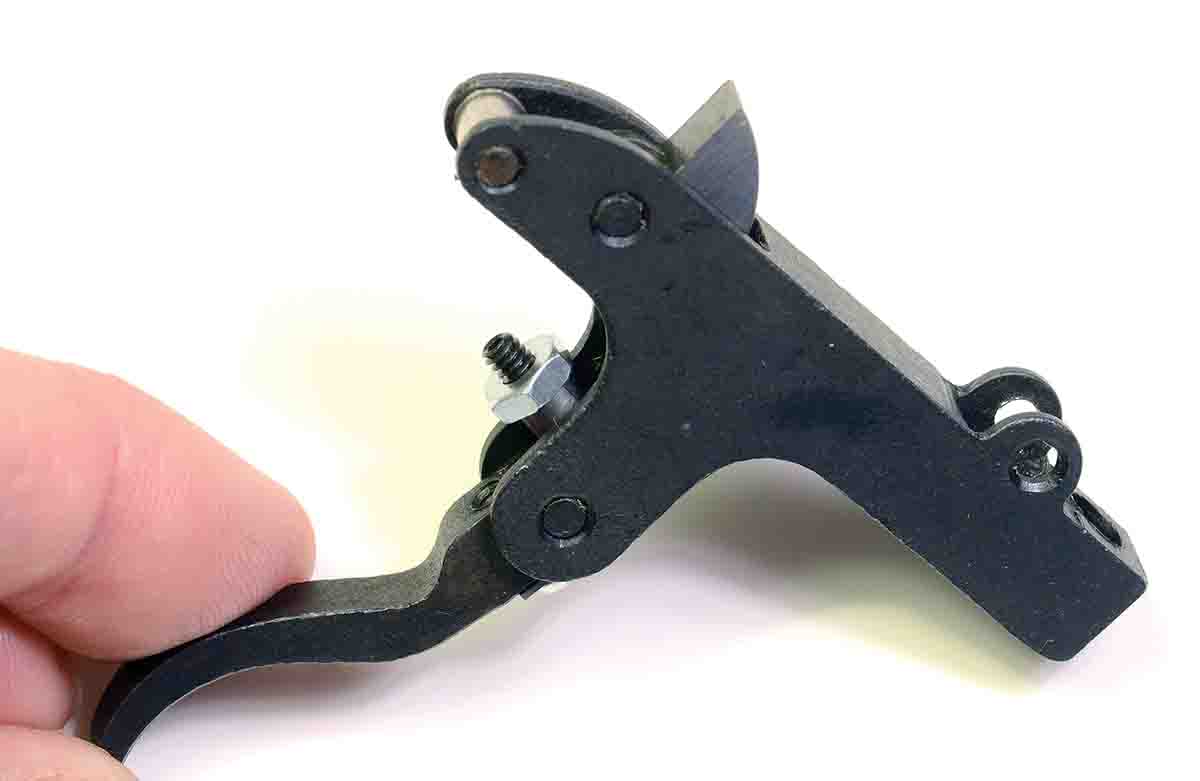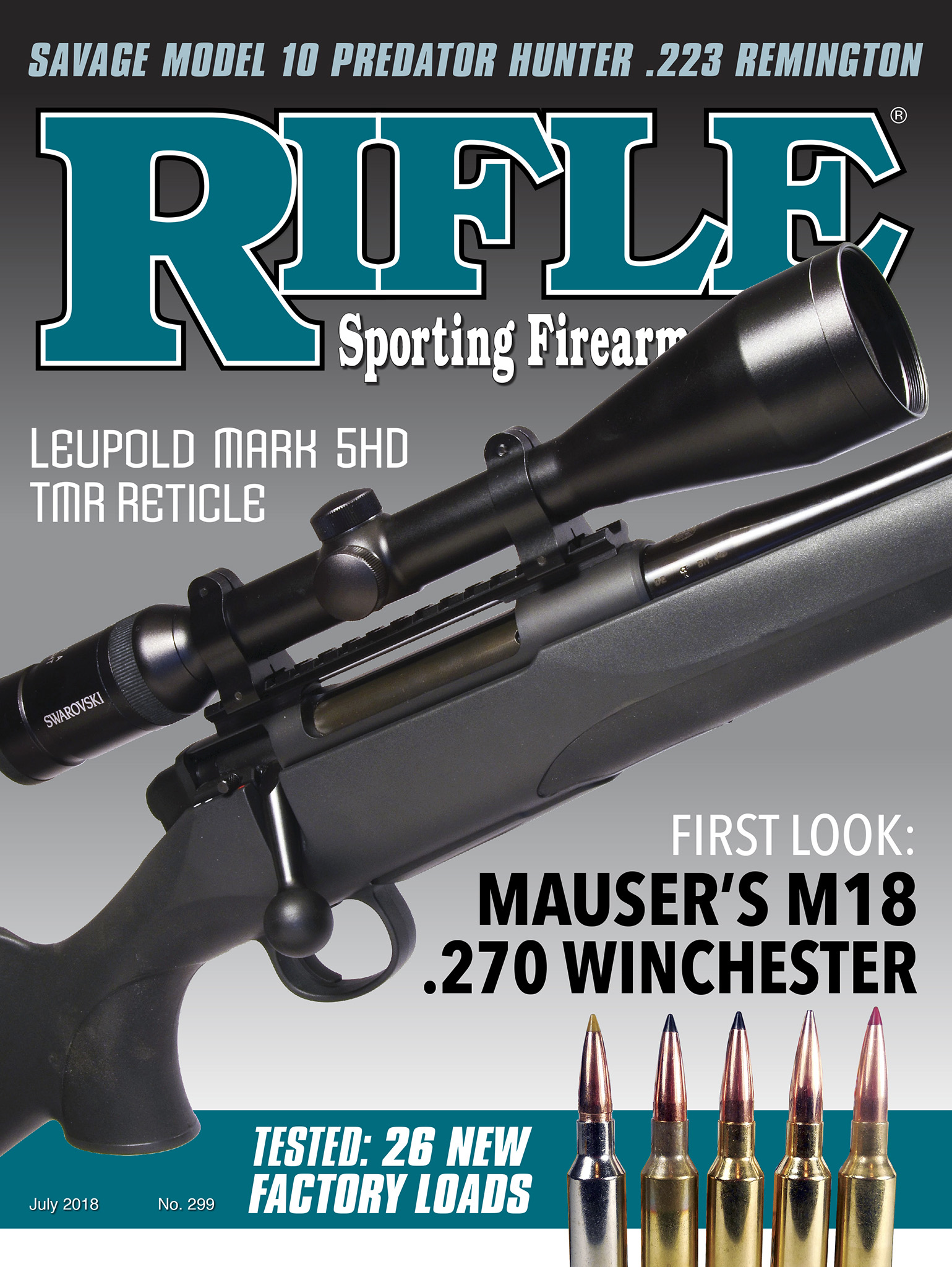Walnut Hill
Triggers: Perfecting an Ancient Gadget
column By: Terry Wieland | July, 18
If you ever question the importance of a trigger on a rifle, try shooting a matchlock. How they were ever used to hit anything is a wonder. It took centuries, literally, to perfect the trigger in principle, and even today we are struggling to improve it.

For many years Sako rifles were generally acclaimed as possessing the finest triggers of any factory product. Time after time, Sako triggers were described as resembling a “glass rod breaking.” Try as I might, it’s impossible to come up with a better analogy.
That description has been around for at least 60 years now. I’ve tried to trace it farther but dead-ended in the 1950s. What this tells us, though, is that even long ago there were some triggers that approached perfection.
For target shooters, triggers and trigger pull can become almost an obsession, but it’s equally important in a hunting rifle. Assuming a basically accurate rifle, the quality of its trigger pull largely determines how well you shoot it. What’s worse, a poor trigger pull can start to act on you psychologically, to the point where you know you’re going to make a bad shot before you begin.
The problem of putting a good trigger on a rifle has been complicated in recent years by the involvement of the legal community, particularly litigation lawyers and corporate counsel, whose job it is to protect the company. It seems to be generally accepted that a trigger with a light pull (3 pounds or less) is somehow more dangerous than one with a heavy pull. As a result, many rifles come from factories with pull weights set far heavier than they should be. This is often compounded by the manufacturer either making no provision for the user to adjust the pull, or warnings that no one should attempt such a thing.
Pull weight and trigger pull quality are two different things. A poor trigger set at 3 pounds is still a poor trigger, while a fine trigger can be set at 6 or 7 pounds and still feel crisp. Crispness is really the issue – crispness and consistency. By crispness, I mean a pull that does not have long, grinding, gritty stages before it releases. Even if it does feel gritty, however, this can be managed if it happens exactly the same way every time. It’s not the kind of thing you want to master, but it can be done if necessary.
The old Winchester Model 70 trigger was admired for years, possessing an adjustment mechanism for both pull weight and over-travel (the noticeable movement that occurs after it releases.) In 2007, having taken over Winchester, Browning replaced that trigger on the Model 70 with the “M.O.A.,” a design it developed for its own bolt-action rifles. In the simplest terms, it uses leverage to increase the bearing surface of trigger on sear, while at the same time reducing the perceived movement of the trigger itself. This new trigger is noticeably superior to the old one.
Custom gunmaker Paul Dressel offers an after-market trigger on the pattern of the old Model 70 for use on Mauser-action rifles, and I have those on a couple. They are good triggers, although I can’t seem to adjust them to eliminate creep entirely. Still, they’re a huge improvement on the triggers the two rifles came with originally.
In the 1970s there was a brisk trade in after-market triggers stoked by the boom in custom-rifle making and the sporterizing of military Mausers, Enfields and Springfields. Big names at the time were Timney, Dayton-
Traister and Canjar. Some were better than others. To be frank, although most writers condemn the military, two-stage triggers found on Mausers and Enfields, they never bother me that much. Two-stage triggers can usually be tuned to provide a crisp release, which is all that matters. If it bothers you, however, replacing a trigger on a Mauser ’98 is about as difficult as opening a door.
Some guys swear by set triggers as the answer. Set triggers have been around, literally, for a couple of centuries, so they don’t have much left to prove. Europeans loved them, and they were standard items on Mannlicher-Schönauers and Mauser sporters. Some are two-trigger mechanisms where one trigger is pulled to “set” the other, which then becomes a “hair” trigger; others have a single trigger that is “set” by pushing it forward. The rifle can be fired without the trigger being set, but it then has quite a heavy pull – and often a two-stage pull at that.
Some writers have pulled out all the linguistic stops in denouncing set triggers for hunting, but if you shoot them a lot and are accustomed to them, I don’t see the problem. On the other hand, I don’t see much of an advantage. On the target range, where a set trigger could be expected to really help, I don’t shoot one any better than I do a rifle with a good conventional trigger. Knowing the trigger is set, I tend to slap at it – a serious fault for any kind of target shooting.
There is also the question of un-setting the trigger if you decide not to take the shot after all. This could certainly happen in the excitement of big-game hunting, where an animal moves out of sight and you need to move to a new position. Sometimes triggers are un-set by holding the setting trigger back while pulling the other one, which “clicks” harmlessly. I cannot bring myself to depend on such a system. Lifting the bolt and clicking the trigger also returns it to equilibrium, and is better for my peace of mind. The conclusion here, I think, is that a set trigger adds complication where I, for one, need no further opportunity to screw up.
Savage’s AccuTrigger, which has been around now for more than 15 years, is really a set trigger in a different form, but without the need to un-set the trigger if the decision is made to not shoot. It is certainly one approach to solving the problem of trigger pull and has been a major contributor to Savage’s success in recent years.
Elsewhere in this issue there is a review of the new Mauser M18, the company’s entry in the low-priced rifle market. The M18 uses a trigger of Mauser’s own design in a polymer housing and is adjusted with a tiny Allen screw. Access to the screw is through the trigger itself – tricky to do, but impossible to change accidentally.
The best word I can think of to describe the Mauser’s trigger pull is “perfect.” There is nothing about it that needs to be changed. It can be adjusted down to below 3 pounds (1,000 grams, to be exact), and I don’t think a trigger on a big-game rifle should be any lighter. For that matter, there is no need for anything lighter on a varmint rifle.
Lightness of weight does not compensate for a pull that is sloppy and gritty, whereas a crisp trigger actually feels lighter than it is. Something I have found, too, is that the best way to judge the quality of a trigger is to go back to it after spending a little time with one that is really good. Suddenly, the trigger you thought was fine turns out not to be.
Pursue this far enough and you may end up like me: I will not hunt with a rifle I think has a bad trigger pull, just as I won’t use a bolt rifle without a three-position safety. Fortunately, undoubtedly to the consternation of litigation lawyers, factory triggers are becoming better at the same time as they are becoming lighter.
Are they all as good as the Sako used to be? It seems to me that some are. They’re like…let me see . . . yes! . . . like a glass rod breaking!


